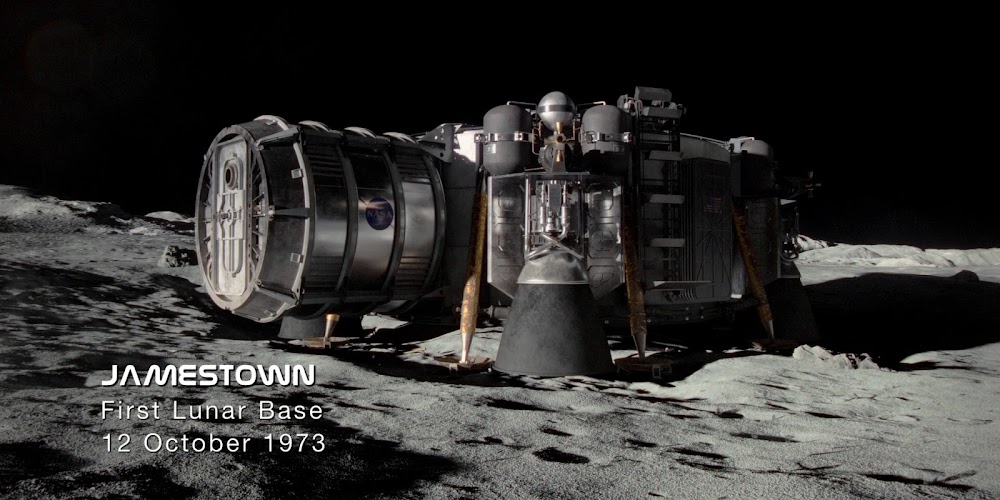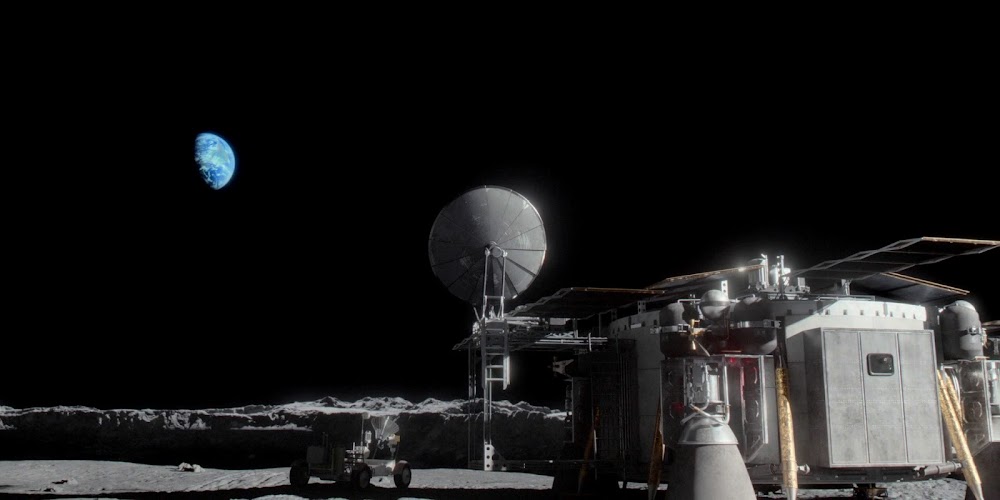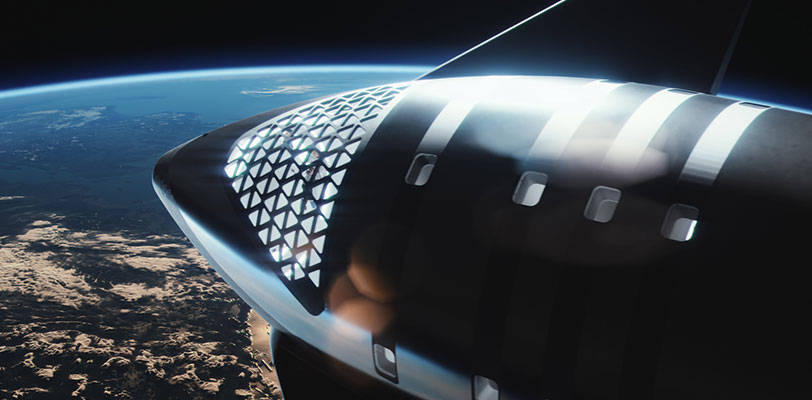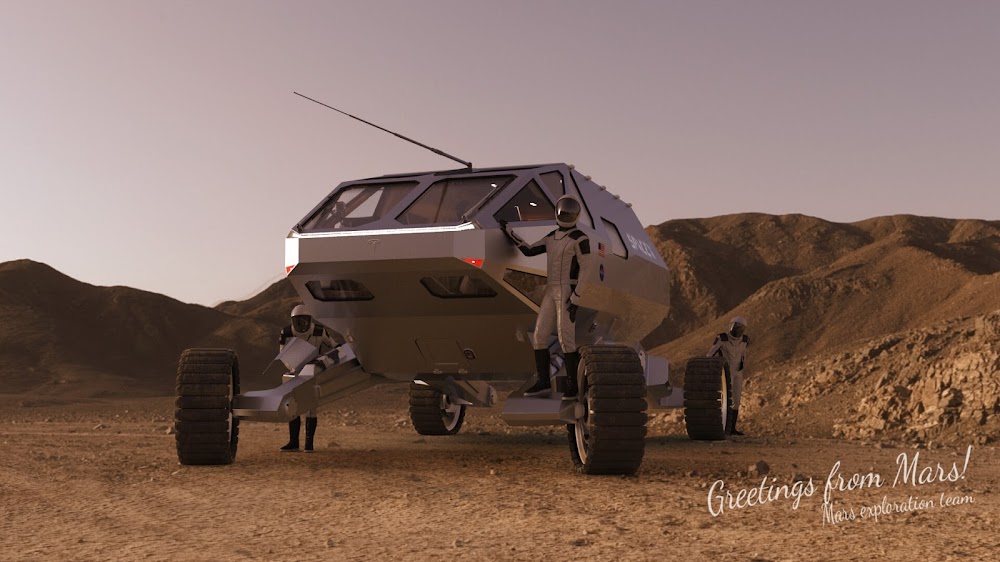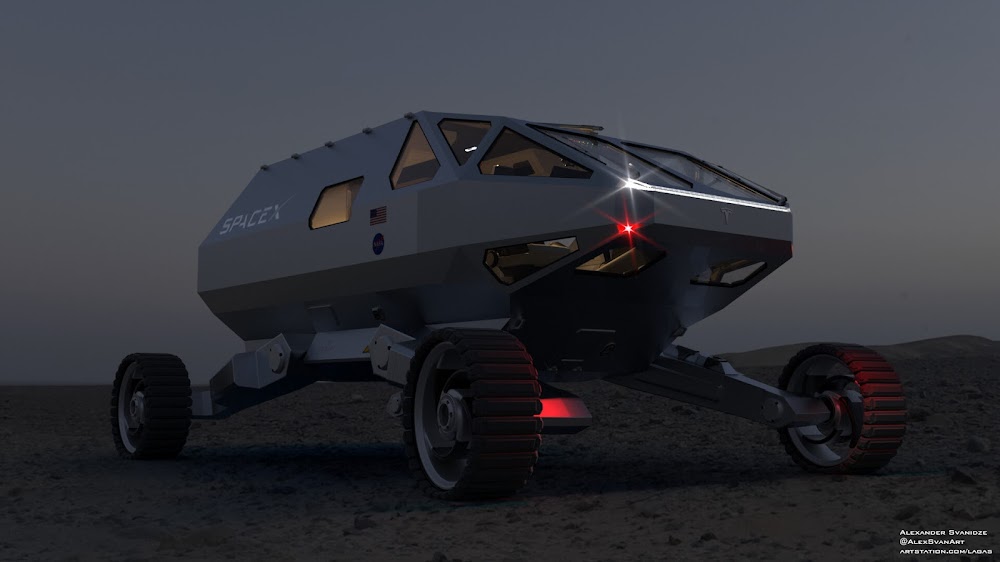Season 1 of the series (aired in 2019) depicts events from 1969 to 1974 in the alternate timeline of For All Mankind. The series are in the middle of season 2 now depicting the alternate 1983. It was said each season of the show will jump about a decade further into the increasingly diverging reality of the show. We will feature season 2 here after it will be aired completely. So here is a collection of HD images from season 1 with a focus on US Jamestown lunar base at the rim of Shackleton Crater near the lunar South pole where water ice is discovered in 1970 (several decades earlier than in reality):
Landing of the initial Jamestown lunar base module in October 1973:
Jamestown Phase 1 US lunar base in 1974:

